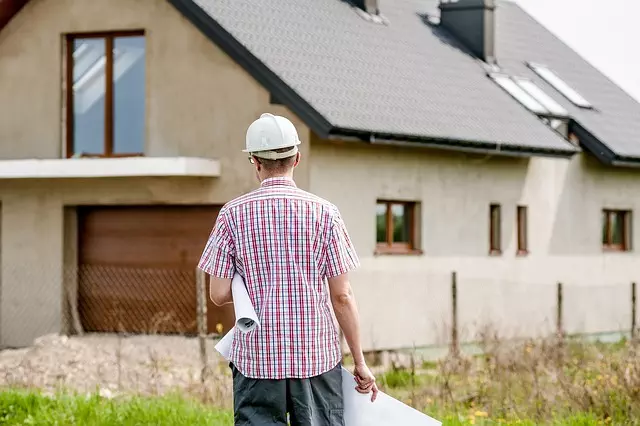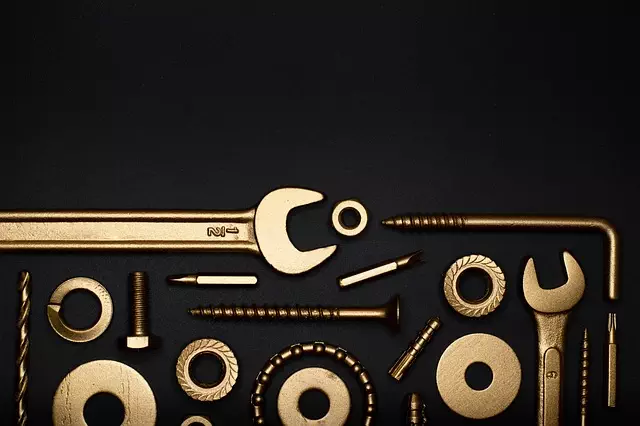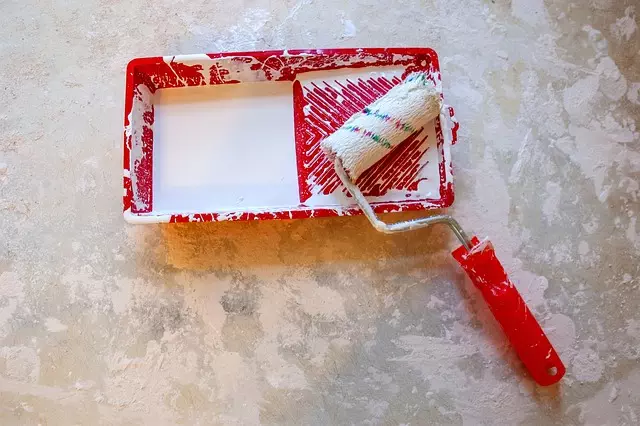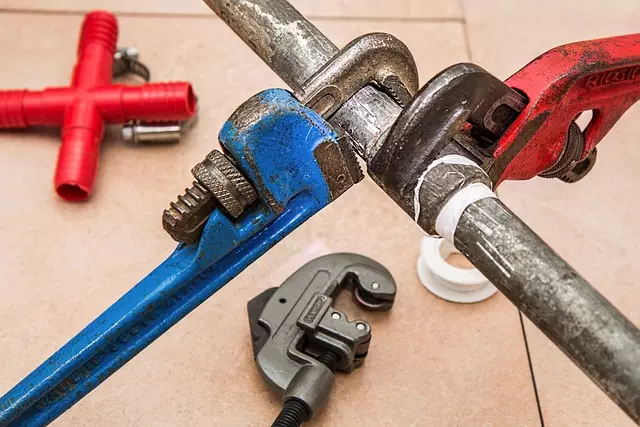When undertaking home repairs or appliance installations, it's crucial to approach each task with careful planning and attention to safety. For any appliance installation, especially those involving gas connections, professional expertise is essential due to the potential risks. Consulting the manufacturer's manual is vital for understanding specific requirements regarding dimensions, electrical specifications, and compatibility. Proper placement, clearance for ventilation, and proximity to water sources are key factors for appliances like refrigerators and washing machines. Adherence to local building codes and safety standards is non-negotiable to ensure the longevity and efficiency of your appliances. Regular maintenance, such as cleaning filters, inspecting seals, and servicing hoses, can prevent issues before they escalate, saving homeowners money on costly repairs and energy expenses. A proactive and informed approach to home repair and maintenance is not only beneficial for the immediate health of your appliances but also contributes to long-term economic savings and a safer living environment. Regular upkeep, following manufacturer guidelines, and investing in quality fixes when necessary are all important aspects of responsible homeownership.
navigating the complexities of home repair and maintenance often leads to addressing issues with major household appliances. Whether you’re installing a new refrigerator or troubleshooting a malfunctioning dishwasher, understanding the basics of appliance installation and recognizing common repair challenges is crucial for maintaining your home’s functionality and efficiency. This article provides a comprehensive overview, from DIY installation tips to professional repair boundaries, ensuring you can confidently handle minor issues or discern when it’s time to call in the experts. With our step-by-step guide and maintenance advice, extend the lifespan of your appliances and keep your home running smoothly.
- Understanding the Basics of Appliance Installation for Homeowners
- Step-by-Step Guide to Safely Installing Major Household Appliances
- Common Appliance Repair Issues and How to Diagnose Them
- When to DIY vs. Professional Appliance Repair: Knowing the Limits
- Essential Maintenance Tips to Extend the Life of Your Home Appliances
- Cost-Effective Strategies for Regular Appliance Servicing and Upkeep
Understanding the Basics of Appliance Installation for Homeowners

When tackling appliance installation in your home, it’s crucial to approach the task with a clear understanding of the process and safety considerations. Homeowners must familiarize themselves with the specific requirements for each appliance, as different models come with unique guidelines. For instance, when installing a refrigerator, one must ensure it is placed on a level surface, away from direct sunlight, and with enough space around it for proper ventilation. Similarly, washing machines should be positioned near a water source and a drain to facilitate efficient operation and minimize leaks.
Before attempting any installation, it’s imperative to read the manufacturer’s manual thoroughly. This document provides valuable information on dimensions, electrical requirements, and compatibility with your home’s utilities. Additionally, for appliances that connect to gas lines, such as stoves or dryers, it’s essential to hire a licensed professional to handle these connections due to the potential dangers involved. For those less experienced in home repair and maintenance, this step is not only recommended but required by safety regulations. Proper installation not only ensures the longevity of your appliances but also safeguards your home from potential electrical hazards or gas leaks. Always prioritize safety and adhere to local building codes and regulations when undertaking any appliance installation project.
Step-by-Step Guide to Safely Installing Major Household Appliances

When installing major household appliances, safety and precision are paramount to ensure they function optimally and integrate seamlessly into your home’s ecosystem. Before beginning, it’s crucial to read and follow the manufacturer’s instructions specific to the appliance model. Start by shutting off the power supply to the appliance from both the circuit breaker and the power source if necessary. This step prevents any risk of electric shock during installation.
Next, prepare the installation site by measuring the space accurately to ensure a perfect fit for the appliance. Remove any old or damaged wiring carefully to make way for new connections, which should be made according to local electrical codes and using the correct gauge of wire. Secure the appliance to the floor and countertop as recommended by the manufacturer to prevent movement that could cause damage or wear over time. Ensure that water supply lines are properly connected and sealed if the appliance requires a water source, and make sure that any exhaust or ventilation systems are properly routed for efficient operation.
Connect electrical supplies according to the wiring diagram included with your appliance, matching wire colors for hot, neutral, and ground connections. Once everything is in place, turn on the power and test the appliance for proper function. If all is well, proceed to the final step of securing any loose components and cleaning up any debris from the installation process. Regular maintenance checks will help prolong the lifespan of your appliance and ensure it continues to operate safely and efficiently within your home. Remember, when in doubt, consult a professional for assistance with appliance installation and repair to avoid potential hazards.
Common Appliance Repair Issues and How to Diagnose Them

Appliance malfunctions are commonplace in households, often necessitating repair or maintenance to restore functionality. Common issues include electrical problems, wear and tear on moving parts, gas leaks, water leaks, and component failures. Regular home repair and maintenance routines can mitigate the frequency of these problems. For instance, inspecting seals and gaskets for deterioration can prevent water leaks in refrigerators or dishwashers. Similarly, cleaning filters and ensuring proper ventilation can maintain the efficiency of dryers and ovens, reducing the risk of fire or excess wear.
When confronted with a malfunctioning appliance, homeowners should first attempt to diagnose the issue. This involves identifying signs such as unusual noises, inefficient operation, or visual anomalies. Basic troubleshooting steps, like checking power connections and fuses for electrical issues, can often resolve simple problems. For more complex faults, consulting the appliance’s manual for diagnostic guides is advisable. Additionally, homeowners with the necessary skills can perform a limited range of repairs themselves, such as replacing filters or tightening connections. However, for safety reasons and when dealing with intricate components like gas valves or electrical circuits, it is highly recommended to seek professional home repair services to avoid potential hazards and ensure proper appliance function.
When to DIY vs. Professional Appliance Repair: Knowing the Limits

When confronted with issues in home appliances, determining whether to undertake a DIY repair or to call for professional assistance can be a nuanced decision. Simple fixes such as replacing a worn-out gasket on a refrigerator door or resetting a circuit breaker might fall within the realm of home repair and maintenance, where a homeowner with basic tools and knowledge can effectively address the problem. However, when dealing with complex appliances like gas dryers, electric stoves, or sophisticated electronics such as washing machines, the stakes are higher. These repairs often require specialized skills, tools, and an understanding of safety protocols to prevent further damage or potential hazards. For instance, any repair involving electrical components should be approached with caution; a licensed professional is best equipped to handle these tasks to ensure compliance with local codes and safety standards. Additionally, when an appliance is out of warranty, underperforming, or displaying signs of chronic issues, it may be more cost-effective in the long run to invest in professional repair services rather than attempting multiple DIY fixes that could provide only temporary solutions. In such cases, seeking the expertise of a qualified technician not only ensures proper repair but also extends the lifespan of your appliance and maintains the safety and integrity of your home environment.
Essential Maintenance Tips to Extend the Life of Your Home Appliances

Regular maintenance is key to ensuring your home appliances operate efficiently and have a longer lifespan. To begin with, scheduling annual check-ups for major appliances such as refrigerators, ovens, and washing machines can catch minor issues before they escalate into costly repairs. Clean or replace filters, inspect seals, and test safety features regularly. Proper usage and maintenance of these appliances also involve clearing debris from cooling fans, ensuring that water lines are not leaking or corroded, and checking that gaskets and door seals maintain a tight seal to prevent energy loss. Additionally, it’s important to keep the exterior of your appliances clean as this can affect their performance and longevity. Dust and grime build-up can impede functionality and cause unnecessary strain on your appliances, so regular wiping and cleaning will significantly extend their operational life.
In the realm of home repair and maintenance, one must not overlook the significance of using the correct parts and tools for repairs. If a part needs replacement, always use manufacturer-approved components to ensure optimal performance and safety. When attempting to fix an appliance yourself, follow the user manual’s guidelines and only proceed with repairs if you are confident in your ability to do so without causing further damage. For complex issues or appliances under warranty, it’s advisable to call a professional technician to avoid invalidating the warranty or risking injury. Keeping a well-stocked toolkit for routine maintenance tasks can facilitate quick and effective repairs, thereby preventing small problems from turning into larger, more expensive ones down the line. With consistent care and attention, your home appliances will serve you well for years to come.
Cost-Effective Strategies for Regular Appliance Servicing and Upkeep

Regular appliance servicing and upkeep are pivotal for ensuring your home’s systems run efficiently, extending their lifespan and preventing costly repairs down the line. A proactive approach to home repair and maintenance can significantly reduce expenses by mitigating small issues before they escalate. For instance, routine cleaning of dryer vents can prevent fires and enhance performance. Similarly, inspecting and replacing air filters in your HVAC system regularly not only improves indoor air quality but also ensures the system operates at peak efficiency. Homeowners can save on energy bills by ensuring that appliances are properly sealed and insulated, which also contributes to a longer lifespan for the appliance. It’s wise to create a maintenance schedule tailored to each appliance’s manufacturer recommendations. This schedule might include tasks such as checking refrigerator door seals, cleaning oven ranges, or servicing washing machine hoses to prevent leaks. Investing in quality repairs when minor issues are identified can be far less costly than waiting for the problem to become severe. By allocating a budget for home repair and maintenance, homeowners can plan for these regular expenses and avoid the financial shock of unexpected appliance failures. Adopting this mindset not only fosters a well-maintained living environment but also contributes to long-term cost savings.
When it comes to maintaining a smoothly functioning household, appliance installation and repair play pivotal roles. Homeowners can benefit greatly from understanding the basics of appliance installation to ensure safety and proper operation. Our comprehensive guide demystifies this process, while also highlighting common issues that may arise, offering practical advice for diagnosis and resolution. It’s crucial to assess one’s capabilities when facing appliance repair challenges; knowing when professional help is necessary can save time and prevent further damage. Regular maintenance, as detailed in our maintenance tips, is key to extending the life of your home appliances and optimizing their performance. By implementing cost-effective strategies for servicing and upkeep, as outlined, you’ll not only enhance efficiency but also contribute to a sustainable and economical home environment. Remember, diligent home repair and maintenance practices are essential for the longevity and functionality of your appliances.


